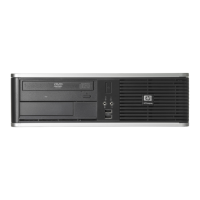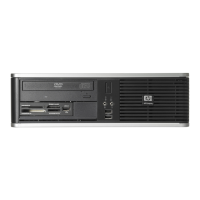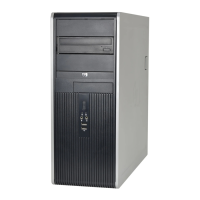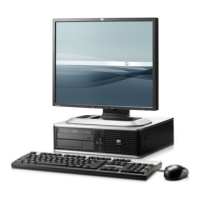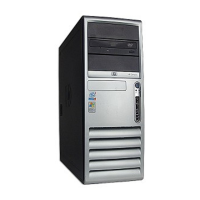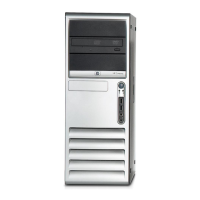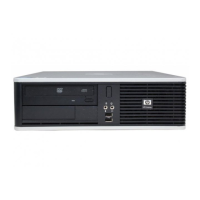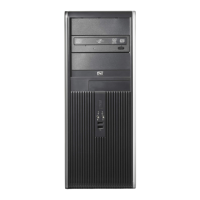2-4 www.hp.com Technical Reference Guide
System Overview
2.3 System Architecture
The systems covered in this guide feature an architecture based on the Intel Q35 Express chipset
(Figure 2-13). All systems covered in this guide include the following key components:
■ Intel Pentium Dual-Core, Core 2 Duo, Core 2 Quad, or Celeron processor.
■ Intel Q35 Express chipset - Includes Q35 GMCH north bridge and 82801 ICH9-DO south
bridge
■ SMC SCH5327 super I/O controller supporting PS/2 keyboard and mouse peripherals
■ AD1884 audio controller supporting line in, line out, microphone in, and headphones out
■ Intel 82566DM 10/100/1000 network interface controller
The Q35 chipset provides a major portion of system functionality. Designed to compliment the
latest Intel processors, the Q35 GMCH integrates with the processor through a
800/1066/1333-MHz Front-Side Bus (FSB) and communicates with the ICH9-DO component
through the Direct Media Interface (DMI). The integrated graphics controller of the Q35 on SFF
and CMT systems can be upgraded through a PCI Express (PCIe) x16 graphics slot. All systems
include a serial ATA (SATA) hard drive in the standard configuration. The USDT model supports
a Slimline Optical Drive through a legacy parallel ATA 100 interface.
Table 2-2 lists the differences between models by form factor.
Notes:
[1] Low-profile slot. Not accessible if PCI riser is installed.
[2] PCIe Mini-Card slot.
[3] Low-profile slot in standard configuration. 2 full-height slots supported with optional PCI riser.
[4] 2nd serial port possible with optional adapter.
Table 2-2.
Architectural Differences By Form Factor
Function USDT SFF CMT
Memory sockets 2 SODIMMs 4 DIMMs 4 DIMMs
PCIe x16 graphics slot? No Yes [1] Yes
# of PCIe x1 slots 1 [2] 2 [1] 2
# of PCI 2.3 slots 0 1 [3] 3
Serial / parallel ports 0 1 [4] 1 [4]
Parallel ports 0 1 1
SATA interfaces 1 3 4
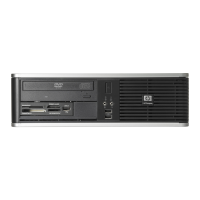
